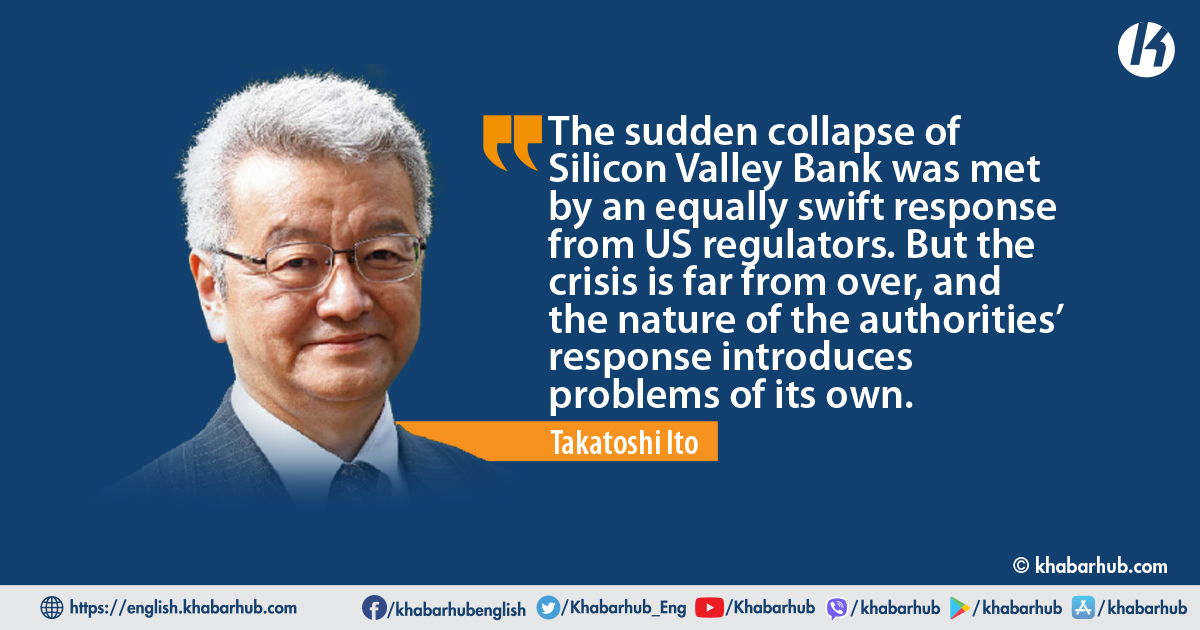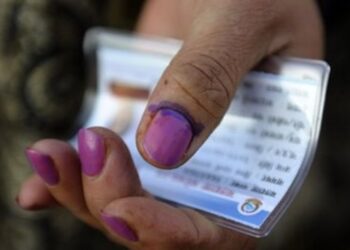The sudden collapse of Silicon Valley Bank on March 10 was met by an equally swift response from US regulators, who announced plans to make whole all depositors, including the uninsured.
But the SVB failure was immediately followed by the collapse of New York’s Signature Bank on March 12, and then by Credit Suisse’s troubles a week later. The latter, once one of the world’s biggest investment banks, is now being taken over by UBS at a massive discount.
Assuming the media’s reporting tells the whole story, these sudden failures have a straightforward cause. SVB took in many large deposits (above the $250,000 threshold insured by the Federal Deposit Insurance Corporation) from tech startups and then used those funds to buy long-term bonds.
But after the US Federal Reserve started raising interest rates at a rapid clip last March, these bonds’ mark-to-market value declined, and the unrealized losses on SVB’s balance sheet rose.
Although SVB had declared that its bonds would be held to maturity, it had to sell some of them at a loss to free up liquidity.
In this case, a bank run suddenly rendered an optimal policy – limited deposit guarantees – suboptimal. But by breaking their own rule, regulators jeopardize their own credibility.
When those losses were announced, depositors – egged on by warnings circulating on social media – feared the worst and rushed to withdraw their deposits, triggering a classic bank run.
Once the run was underway, additional bond “fire sales” to free up liquidity became inevitable, and SVB’s liquidity crisis became an insolvency crisis.
Rescuing all SVB depositors – including those with deposits above the FDIC ceiling – is not without controversy. Critics of an ex post blanket guarantee argue that the state is making up the rules as it goes and inviting moral hazard (irresponsible behavior in the future).
While proponents of the guarantee, including Secretary of the Treasury Janet L. Yellen and Fed Chair Jerome Powell, acknowledge these issues, they are much more worried about systemic risk.
What will happen next? It is reasonable to assume that as interest rates in the United States and Europe continue to rise, more banks will experience greater unrealized losses from their long-term bond holdings.
They have a point. After all, a bank run that took down a larger institution could trigger a domino effect, derailing the broader banking and financial systems. Some banks really are too big to fail, and systemic risk is deadly for any economy.
We saw this firsthand during the US savings and loan crisis in the 1980s, the Japanese banking crisis in 1997-98, and the US subprime mortgage crisis in 2008.
That said, time inconsistency in policymaking (coming up with new tools and rules after the fact) does present a difficult problem.
In this case, a bank run suddenly rendered an optimal policy – limited deposit guarantees – suboptimal. But by breaking their own rule, regulators jeopardize their own credibility.
This is where moral hazard comes in. Now that US authorities have issued an ex post blanket guarantee, all depositors will expect that any and all deposits will be protected.
They will duly pour deposits into institutions offering higher interest rates; but such competitive rates tend to be offered on large deposits by weak banks with tight liquidity constraints.
These weak institutions’ depositors can now anticipate being made whole if the institution fails. Accordingly, they will cease to play any monitoring role within the financial system.
And make no mistake: bank executives will be motivated to take on a lot more risk. On one hand, if their risky loans do not become non-performing, their institutions will reap large profits, and they will be compensated handsomely.
On the other hand, if their loans go south, they will just leave the bank and move on to the next thing (recall that SVB paid out bonuses on the very day that it was failing).
There are ways to mitigate moral hazard. First, depositors should be guaranteed for their principal, but not for interest payments (or at least for above-average payments). Second, bank executives’ salaries for the period leading up to the crisis – say, the previous three years – should be clawed back, and any pending bonuses should be denied.
But if the inflation rate in Japan continues to rise for the rest of the year, some regional Japanese banks may confront liquidity crises, which could trigger bank runs. Though this is far from the baseline scenario, it cannot be ruled out.
One reason why the 2008 bank bailouts were so unpopular was that executives still received bonuses. This must not be repeated in the current crisis.
What will happen next? It is reasonable to assume that as interest rates in the United States and Europe continue to rise, more banks will experience greater unrealized losses from their long-term bond holdings.
As with SVB, all it will take is a rumor or a whiff of fear about the bank’s solvency to trigger another run, especially if there is still uncertainty about how far regulators are willing to go in responding.
In Japan, where the inflation rate is much lower than in the US and Europe, increases in the yields on long-term bonds (which reduce the market value of the bonds that were purchased previously at a lower rate) are very limited, and the Bank of Japan is still intervening in the market to cap the ten-year bond rate at 50 basis points.
But if the inflation rate in Japan continues to rise for the rest of the year, some regional Japanese banks may confront liquidity crises, which could trigger bank runs. Though this is far from the baseline scenario, it cannot be ruled out.
(Takatoshi Ito, a former Japanese deputy vice minister of finance, is a professor at the School of International and Public Affairs at Columbia University and a senior professor at the National Graduate Institute for Policy Studies in Tokyo)
Copyright: Project Syndicate









Comment